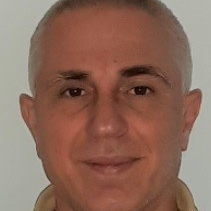Modeling and Simulation of Industrial and Environmental Membrane Technologies
A special issue of Membranes (ISSN 2077-0375). This special issue belongs to the section "Membrane Physics and Theory".
Deadline for manuscript submissions: closed (31 January 2024) | Viewed by 5957
Special Issue Editor
Interests: desalination; membrane technology; CFD simulation; reverse osmosis; membrane separation; water treatment; modeling and simulation; process optimization
Special Issues, Collections and Topics in MDPI journals
Special Issue Information
Dear Colleagues,
Process modeling and simulation have been widely used in the design, control, and optimal operation of processes contributing to cost reduction and process sustainability.
Membrane technologies are no exception, and they also require the development of models that allow their behavior to be more accurately described as well as to simulate their behavior both as isolated parts of the process or through interaction with other process units.
However, unlike other process units, where well-established models exist, membrane technologies require the development of specific models adapted to the membrane materials used and the feed streams to be treated.
Following the success of the recent Special Issue “Modeling and Simulation of Industrial and Environmental Processes with Membranes”, this new edition continues to seek recent contributions to the modeling and simulation of membrane processes. Of interest for this Special Issue are all aspects associated with the simulation procedure of membrane processes from the microscale, the macroscopic membrane process, and the interaction of the membrane process with other units. Also welcome are successful applications of membrane processes, especially those of a sustainable character, as well as comprehensive reviews within the fields of membrane process modeling and simulation.
Prof. Dr. José M. Gozálvez-Zafrilla
Guest Editor
Manuscript Submission Information
Manuscripts should be submitted online at www.mdpi.com by registering and logging in to this website. Once you are registered, click here to go to the submission form. Manuscripts can be submitted until the deadline. All submissions that pass pre-check are peer-reviewed. Accepted papers will be published continuously in the journal (as soon as accepted) and will be listed together on the special issue website. Research articles, review articles as well as short communications are invited. For planned papers, a title and short abstract (about 100 words) can be sent to the Editorial Office for announcement on this website.
Submitted manuscripts should not have been published previously, nor be under consideration for publication elsewhere (except conference proceedings papers). All manuscripts are thoroughly refereed through a single-blind peer-review process. A guide for authors and other relevant information for submission of manuscripts is available on the Instructions for Authors page. Membranes is an international peer-reviewed open access monthly journal published by MDPI.
Please visit the Instructions for Authors page before submitting a manuscript. The Article Processing Charge (APC) for publication in this open access journal is 2700 CHF (Swiss Francs). Submitted papers should be well formatted and use good English. Authors may use MDPI's English editing service prior to publication or during author revisions.
Keywords
- membrane process
- modeling
- simulation
- industry
- environment
- sustainability
- optimization
- computer fluid dynamics






